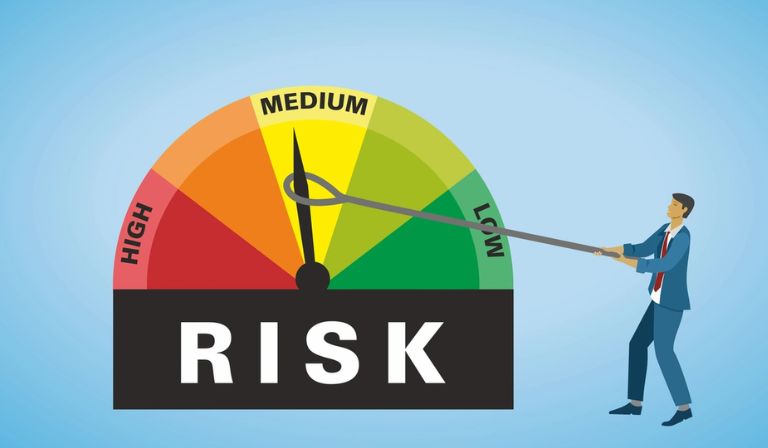Risk management is a fundamental process for individuals and organizations aiming to safeguard their resources, reputation, and objectives against unforeseen challenges. By identifying, assessing, and addressing potential risks, stakeholders can enhance decision-making and ensure long-term success. This article delves into the intricacies of risk management, offering insights into its principles, processes, and best practices.
Table of Contents
ToggleWhat Is Risk Management?
Risk management refers to the systematic approach to identifying, analyzing, and mitigating risks that can negatively impact an organization or individual. These risks can emerge from various sources, including financial uncertainties, legal liabilities, strategic missteps, or natural disasters. The ultimate goal is to minimize potential losses while maximizing opportunities.
The Importance of Risk Management
Effective risk management is pivotal for several reasons:
- Protecting Assets: By anticipating potential threats, individuals and organizations can protect physical, financial, and intellectual assets.
- Ensuring Continuity: A robust risk management plan helps ensure uninterrupted operations, even during crises.
- Enhancing Decision-Making: Understanding risks allows for informed choices, improving strategic planning.
- Compliance and Reputation: Many industries require adherence to regulations. Managing risks helps avoid legal repercussions and safeguard reputation.
Key Principles of Risk Management
The effectiveness of risk management hinges on a few core principles:
- Proactivity: Address risks before they materialize to minimize potential damage.
- Integration: Embed risk management into all organizational processes rather than treating it as a standalone activity.
- Customization: Tailor risk management strategies to suit the specific context and requirements of the organization.
- Transparency: Maintain clear communication about risks and mitigation measures with all stakeholders.
- Continuous Improvement: Periodically review and update risk management practices to adapt to changing circumstances.
The Risk Management Process
The risk management process typically involves the following steps:
- Risk Identification:
- Identify potential risks by analyzing internal and external environments.
- Common tools: brainstorming, SWOT analysis, checklists, and historical data reviews.
- Risk Assessment:
- Evaluate the likelihood and potential impact of identified risks.
- Use techniques like qualitative assessments, quantitative models, or heat maps to prioritize risks.
- Risk Mitigation:
- Develop strategies to reduce the likelihood or impact of risks.
- Examples include transferring risks through insurance, adopting preventive measures, or diversifying investments.
- Implementation:
- Put the chosen mitigation strategies into action.
- Assign responsibilities and allocate resources to ensure successful execution.
- Monitoring and Review:
- Continuously monitor risks and the effectiveness of mitigation strategies.
- Adapt plans as necessary to address emerging threats or changing conditions.
Types of Risks
Risks can be broadly categorized into:
- Strategic Risks:
- Risks arising from poor strategic decisions, changes in market conditions, or competitive dynamics.
- Operational Risks:
- Risks linked to internal processes, systems, or human errors, such as supply chain disruptions or technical failures.
- Financial Risks:
- Risks related to financial management, including market volatility, credit issues, and liquidity challenges.
- Compliance Risks:
- Risks associated with non-adherence to laws, regulations, or industry standards.
- Reputational Risks:
- Risks that affect public perception, such as negative publicity or ethical breaches.
- Environmental Risks:
- Risks stemming from natural disasters, climate change, or other ecological factors.
Best Practices for Effective Risk Management
Adopting best practices can significantly enhance the efficacy of risk management efforts:
- Foster a Risk-Aware Culture:
- Encourage a mindset where everyone, from leadership to staff, understands the importance of managing risks.
- Leverage Technology:
- Use advanced tools and software for real-time risk monitoring, predictive analytics, and efficient reporting.
- Engage Stakeholders:
- Collaborate with all stakeholders to ensure comprehensive risk identification and buy-in for mitigation strategies.
- Develop a Contingency Plan:
- Prepare for worst-case scenarios by having backup strategies, such as alternative suppliers or emergency funds.
- Regular Training and Education:
- Conduct workshops and simulations to keep teams prepared for potential risks.
- Document and Learn:
- Maintain records of risks, responses, and outcomes to inform future strategies.
Challenges in Risk Management
While essential, risk management is not without challenges:
- Uncertainty: Accurately predicting risks and their impact remains a daunting task.
- Resource Constraints: Limited time, budget, or expertise can hinder effective implementation.
- Resistance to Change: Overcoming inertia or skepticism about the value of risk management can be difficult.
- Dynamic Environments: Rapidly evolving markets and technologies require constant vigilance and adaptability.
Case Study: Applying Risk Management Principles
Consider a hypothetical manufacturing company facing potential supply chain disruptions due to geopolitical tensions. By implementing a risk management process, the company could:
- Identify Risks: Recognize vulnerable suppliers and potential trade barriers.
- Assess Risks: Estimate the likelihood of disruptions and their financial impact.
- Mitigate Risks: Diversify the supplier base and stockpile critical materials.
- Monitor and Review: Regularly evaluate geopolitical developments and supplier performance.
Through these measures, the company not only minimizes potential losses but also gains a competitive advantage by ensuring operational continuity.
The Future of Risk Management
As global interconnectivity and technological advancements reshape the risk landscape, risk management must evolve to remain effective. Emerging trends include:
- Artificial Intelligence: Leveraging AI for predictive analytics and automated risk assessment.
- Sustainability: Integrating environmental, social, and governance (ESG) factors into risk management frameworks.
- Cybersecurity: Addressing growing threats from cyberattacks and data breaches.
- Resilience: Shifting focus from risk avoidance to building organizational resilience and adaptability.
Conclusion
Risk management is a critical discipline that requires foresight, flexibility, and commitment. By understanding potential threats and proactively addressing them, individuals and organizations can navigate uncertainties with confidence. While challenges persist, the principles and practices of risk management offer a roadmap to safeguard assets, maintain trust, and achieve long-term goals.











